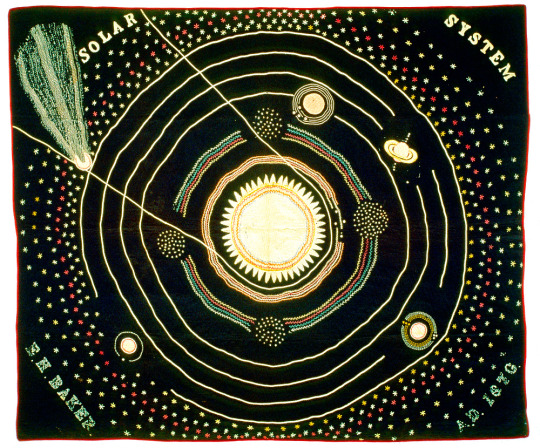#science technology and society
Explore tagged Tumblr posts
Text
My New Article at WIRED
Tweet
So, you may have heard about the whole zoom “AI” Terms of Service clause public relations debacle, going on this past week, in which Zoom decided that it wasn’t going to let users opt out of them feeding our faces and conversations into their LLMs. In 10.1, Zoom defines “Customer Content” as whatever data users provide or generate (“Customer Input”) and whatever else Zoom generates from our uses of Zoom. Then 10.4 says what they’ll use “Customer Content” for, including “…machine learning, artificial intelligence.”
And then on cue they dropped an “oh god oh fuck oh shit we fucked up” blog where they pinky promised not to do the thing they left actually-legally-binding ToS language saying they could do.
Like, Section 10.4 of the ToS now contains the line “Notwithstanding the above, Zoom will not use audio, video or chat Customer Content to train our artificial intelligence models without your consent,” but it again it still seems a) that the “customer” in question is the Enterprise not the User, and 2) that “consent” means “clicking yes and using Zoom.” So it’s Still Not Good.
Well anyway, I wrote about all of this for WIRED, including what zoom might need to do to gain back customer and user trust, and what other tech creators and corporations need to understand about where people are, right now.
And frankly the fact that I have a byline in WIRED is kind of blowing my mind, in and of itself, but anyway…
Also, today, Zoom backtracked Hard. And while i appreciate that, it really feels like decided to Zoom take their ball and go home rather than offer meaningful consent and user control options. That’s… not exactly better, and doesn’t tell me what if anything they’ve learned from the experience. If you want to see what I think they should’ve done, then, well… Check the article.
Until Next Time.
Tweet
Read the rest of My New Article at WIRED at A Future Worth Thinking About
#ai#artificial intelligence#ethics#generative pre-trained transformer#gpt#large language models#philosophy of technology#public policy#science technology and society#technological ethics#technology#zoom#privacy
124 notes
·
View notes
Text

In the autumn of 1883, a paper in the nation's capital reported that "an Iowa woman has spent 7 years embroidering the solar system on a quilt" — to teach astronomy in an era when women could not attend college. Her story.
#Women's History Month#women's history#astronomy#craft#quilting#space#science#science and technology#history and literature#culture and society
6K notes
·
View notes
Text
therapy isnt enough i need capitalism to end
#capitalism#anti capitalism#anti work#america#democracy#society#politics#hopepunk#solarpunk#socialism#leftist#anarchism#technology#science#therapy#need#coping mechanism#burnout#autistic#actually autistic#cptsd#i need to rest for at least 5 years
944 notes
·
View notes
Text








Fear Factory - Replica
#Fear Factory#Demanufacture#Replica#Release date:#June 13th#1995#Full-length#Genre:#Industrial/Death Metal#Themes:#Technology#Anti-religion#Hate#Society#Science fiction#Politics#USA#my gif#gifs#my edit#gif
28 notes
·
View notes
Text
Someday I’ll stop reblogging arcane critical posts I’m sure but fjskdjsksjs my cousin finally finished and I was sent back into the hole that is ‘wtf was that I am actually so thoroughly dissatisfied with nearly every narrative choice they made now that I’m not being blinded by emotions’ and i fear I’m no fun to talk to ab it for her 😂
The tags for this got Crazy but I stand by them 😂 (tho none of it is polished so, yk, don’t come at me if some stuff is a lil underbaked ok, I only got 30 sentences)
#she was still in her grieving jinx era#tbf to her it took me a day for my feelings to go from man the visuals were so stunning and the emotional hurt from vi and jinx#to actually analyzing but like#on nearly every level for the characters I was dissatisfied#yes even echo#bc whERE were the firelights#and I KNOW all of it boils down to#they did not care to tell the story of a revolution#they just didn’t#so the characters have to drop every part of that until it becomes an afterthought#despite it being the driving tension of season 1#Vi does not think on her actions at all which I’ve talked a bit more ab elsewhere so I’ll spare you#jinx has the most relation to that plotline but even then we don’t linger on it like I thought through isha we could go down and parallel#silco and vanders struggle.. silco wanting independence but not being able to trade his daughter vander putting down his gloves to make sur#they were safe#and jinx who really didn’t care that much ab the politics presumably channeling that same energy into fighting for independence for isha#could be so good… esp if it was combined w a storyline where Vi recons w her own identity outside just a protector of jinx#and then echo and his firelights building community and fighting for his ppl like#do u see what I’m saying#for sevika I think wld have been rlly interesting to show her shift from follower to leader bc she has always wanted what’s best for zaun#but has always simply backed whoever she thought would get it done#I think her taking more agency in it was a good choice I also think her and ekko shld have some sort of interaction#and Mel should have beat her mom with her own strengths. her political savvy. her cunning. and her ideals. and should have pushed for an#independent zaun bc I think Mel wants peace and I think if the story cared to go the revolutionary way she would have known what the right#thing to do was. also her mom shld not have suddenly been stupid. after pushing for the war and finally getting the weapon advancement rout#she wanted maybe she does something else. but also I think Jayce and Viktor realizing what they have created w their science was a good plo#it’s not the technology it is how you wield it and how you develop it and then realizing what they’ve done was always good. I hate the pivo#to oh yea it’s actually the magic is bad.. like.. ok. intrinsic magic good. magic to better the society and cure ppl badddd (tho that’s not#where they ended up but the story made it seem like yea the arcane is just bad nd it corrupts if you ask too much of it ??#arcane critical
7 notes
·
View notes
Text

The Future Unscripted: Professor Nolan’s Musings on AI, NHI, and Humanity
Professor Garry Nolan’s conversation offers a profound exploration of the intersections between unconventional phenomena, artificial intelligence (AI), and humanity’s future. His personal anecdotes of unexplained childhood experiences serve as the catalyst for his professional inclination towards the unorthodox, underscoring the importance of considering unconventional data in scientific inquiry. By embracing anomalies, Nolan exemplifies the transformative potential of curiosity-driven research in the pursuit of novel knowledge.
Nolan’s scientific approach is notably inclusive, as evidenced by his exploration of Non-Human Intelligence (NHI), a term that broadens the scope of inquiry beyond traditional notions of extraterrestrial life. The analysis of enigmatic materials, such as Bismuth Magnesium, and the theorized capabilities of NHI, including mastery over anti-gravity and energy, prompt intriguing questions about coexistence. His analogy between human-ant interactions and potential human-NHI relations offers a thought-provoking perspective on mutual existence, shifting the focus from competition to symbiosis.
The future, as envisioned by Nolan, is intimately tied to AI’s development and application. He posits AI as a dual-edged solution: a tool for expediting scientific breakthroughs and resolving global crises, as well as a potential precursor to artificial superintelligence (ASI) that could embody a form of consciousness. This speculative horizon highlights the imperative of careful AI management to ensure equitable global access to education and growth. Nolan’s emphasis on AI-driven objective decision-making processes also presents a compelling case for reforming the current political landscape, which is often mired in tribal histories and scarcity mindsets.
A notable aspect of Nolan’s discourse is his critique of contemporary leadership and power structures, juxtaposed with the conflict resolution methods of bonobo chimps as a paradigm for more harmonious human interactions. This dichotomy underscores the urgent need for innovative, peace-centric approaches to global relations. Ultimately, Nolan’s optimism about humanity’s future, rooted in our capacity for crisis-driven ingenuity and the judicious leveraging of AI, presents a compelling vision of a world where challenges are met with collective brilliance and equality in education and growth becomes a universal reality.
Gary Nolan: Alien & UFO - The Critical Question Nobody's Asking (Gita Wirjawan, Endgame Podcast, December 2024)
youtube
Friday, December 6, 2024
#artificial intelligence#non-human intelligence#unidentified aerial phenomena#uap#future of humanity#scientific approach#unconventional thinking#ai and society#technology and humanity#futurism#speculative science#interdisciplinary studies#innovation and progress#human knowledge and understanding#interview#ai assisted writing#machine art#Youtube
7 notes
·
View notes
Quote
The culture-heroes of preliteracy and postliteracy alike are robots.
Marshall McLuhan, Laws of Media: The New Science (with Eric McLuhan)
#culture#society#mechanism#instrumentalism#technology#media#quotes#McLuhan#Marshall McLuhan#Laws of Media: The New Science
11 notes
·
View notes
Text







Cybernetics Girl
#Cyberpunk#Science Fiction#Anime#Manga#Cybernetics#Artificial Intelligence#Existentialism#Transhumanism#Hacking#Society and Technology#Action#Dystopia#Law Enforcement#Philosophy#Virtual Reality#Futuristic#Identity#Technological Advancements#Human-Machine Interface#Political Intrigue#Mind Upload#Consciousness Exploration#Futuristic Cityscapes#Surveillance#Futuristic Weapons#Ethical Dilemmas#Techno-Thriller#Androids#Mystery#Mind-Hacking
34 notes
·
View notes
Text
"Oh it would have been more satisfying if the humans had invented a technology which defeated the Martians rather than have them killed off by accident just when humanity's impotence in the face of disaster seems to be confirmed". I
To me that's just a fancy way of saying "Yeah but humans could totally handle the Martians and the writer has a duty to reassure the audience of that!"
Sir we cannot even handle climate change and I'm sorry to tell you that it's not entirely due to a lack of technological expertise
#In all fairness maybe we can handle climate change we don't know yet but it's going to take a lot more than a fancy new invention#As for war and genocide and all the other human ills that we can't seem to solve how do you think the atomic bomb worked out#And when I say technology or science I don't just mean in the normal STEM sense#As a history student you end up asking a lot whether your subject is actually beneficial to society or capable of solving anything#Or the political sciences- was the League f Nations or even today's UN a success?#Maybe if we just keep learning and studying we can solve it! Well maybe. But what will humanity look like when we're done?#Anyway I'm getting a bit far from the point of the War of the Worlds but maybe I'm just not enough of a science fiction nut for this convo#Maybe the image of societal collapse impressed itself on me more strongly than any delight over long-winded explanations of alien machines#Maybe it would be different if I'd read the book hoping for a good story about aliens#rather than to read one man's uncomfortable rather pessimistic views on what an alien invasion might tell us about human ity#I am simply asking certain fans to sometimes Dig a Little Deeper#Alright rant really over this time#...maybe#It's just that there are so many potential issues with that book but honestly I can't accept that the ending is one of them#Even the hint at the end that since the Martians proved it possible maybe some day humans might colonise other planets I just !!!!!
11 notes
·
View notes
Text

#action#advancements#anime#artificial#cybernetics#cyberpunk#dystopia#enforcement#existentialism#fiction#futuristic#hacking#identity#intelligence#interface#intrigue#law#manga#mind#philosophy#political#reality#science#society#technological#technology#transhumanism#upload#virtual#today on tumblr
5 notes
·
View notes
Text
UNDERSTAND CHINA 2025/01

I am sure you know quite a lot of things about China.
However there can always be something new to discover.
The FREE MINI lifestyle magazine DISCOVER CHINA is here for you to guide you through current and ancient mysteries of Chinese culture, thinking and innovation.
Get your free copy here: https://payhip.com/b/sM32k
#china#chinese culture#chinese language#technology#innovation#chinese society#science#learn chinese#beijing#shanghai
4 notes
·
View notes
Text
My New Article at American Scientist
Tweet
As of this week, I have a new article in the July-August 2023 Special Issue of American Scientist Magazine. It’s called “Bias Optimizers,” and it’s all about the problems and potential remedies of and for GPT-type tools and other “A.I.”
This article picks up and expands on thoughts started in “The ‘P’ Stands for Pre-Trained” and in a few threads on the socials, as well as touching on some of my comments quoted here, about the use of chatbots and “A.I.” in medicine.
I’m particularly proud of the two intro grafs:
Recently, I learned that men can sometimes be nurses and secretaries, but women can never be doctors or presidents. I also learned that Black people are more likely to owe money than to have it owed to them. And I learned that if you need disability assistance, you’ll get more of it if you live in a facility than if you receive care at home.
At least, that is what I would believe if I accepted the sexist, racist, and misleading ableist pronouncements from today’s new artificial intelligence systems. It has been less than a year since OpenAI released ChatGPT, and mere months since its GPT-4 update and Google’s release of a competing AI chatbot, Bard. The creators of these systems promise they will make our lives easier, removing drudge work such as writing emails, filling out forms, and even writing code. But the bias programmed into these systems threatens to spread more prejudice into the world. AI-facilitated biases can affect who gets hired for what jobs, who gets believed as an expert in their field, and who is more likely to be targeted and prosecuted by police.
As you probably well know, I’ve been thinking about the ethical, epistemological, and social implications of GPT-type tools and “A.I.” in general for quite a while now, and I’m so grateful to the team at American Scientist for the opportunity to discuss all of those things with such a broad and frankly crucial audience.
I hope you enjoy it.
Tweet
Read My New Article at American Scientist at A Future Worth Thinking About
#ableism#ai#algorithmic bias#american scientist#artificial intelligence#bias#bigotry#bots#epistemology#ethics#generative pre-trained transformer#gpt#homophobia#large language models#Machine ethics#my words#my writing#prejudice#racism#science technology and society#sexism#transphobia
62 notes
·
View notes
Text

Oliver Sacks on how chocolate cast its spell upon humanity, from biochemistry to culture.
66 notes
·
View notes
Text

#Deep Space Community#Ars Electronica Solutions#Ars Electronica#Linz#Austria#Upper Austria#Oberösterreich#Österreich#Art#Technology#Science#Society#Kunst#Technologie#Gesellschaft#Wissenschaft#Zukunft#Future#Ars Electronica Festival#HOPE - who will turn the tide#Ars Electronica Festival 2024#2024#POSTCITY#Ars Electronica Solution#Ars Electronica Solution 2024
3 notes
·
View notes
Text
Fear Factory - Replica
#Fear Factory#Demanufacture#Replica#Release date:#June 13th#1995#Full-length#Genre:#Industrial/Death Metal#Themes:#Technology#Anti-religion#Hate#Society#Science fiction#Politics#USA
15 notes
·
View notes
Text
"Archaeologists using laser-sensing technology have detected what may be an ancient Mayan city cloaked by jungle in southern Mexico, authorities said Wednesday.
The lost city, dubbed Valeriana by researchers after the name of a nearby lagoon, may have been as densely settled as the better-known pre-Hispanic metropolis of Calakmul, in the south part of the Yucatan peninsula.
What the study, published this week in the journal Antiquity, suggest is that much of the seemingly empty, jungle-clad space between known Maya sites may once have been very heavily populated.
"Previous research has shown that a large part of the present-day state of Campeche is a landscape that was transformed by its ancient inhabitants," said Adriana Velázquez Morlet of Mexico's National Institute of Anthropology and History, a co-author of the report. "Now, this study shows that a little-known region was a urbanized landscape."
Mexico's National Institute said about 6,479 structures have been detected in LiDAR images covering an area of about 47 square miles (122 square kilometers). The technique maps landscapes using thousands of lasers pulses sent from a plane, which can detect variations in topography that ware not evident to the naked eye."
continue reading
#archaeology#mexico#mayans#history#lidar#lidar technology#research#science#discovery#humanity#culture#society#anthropology#aerial survey#jungle#technology#lasers#laser-sensor technology#past#city
6 notes
·
View notes